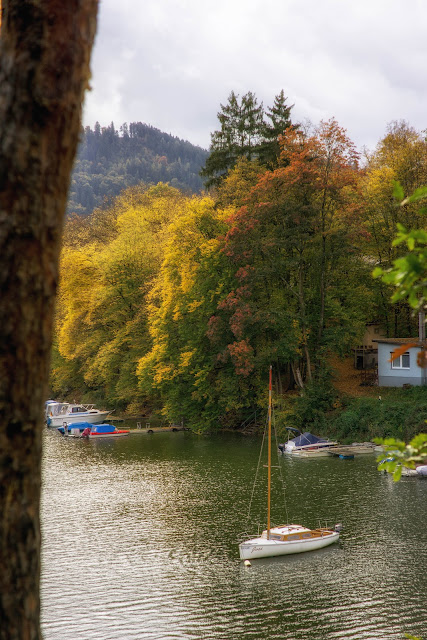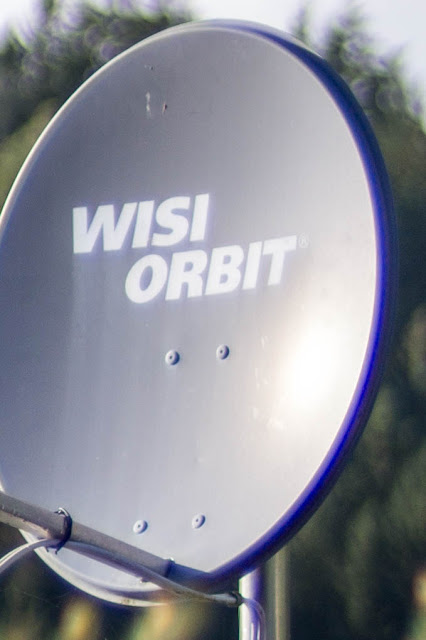In May 2017 the Chinese astonished the hobby photographers with a sensational message: a lens with an impressive initial aperture of f/1.1 was published. For the APS-C sensor and for under 200,- Euro to buy. On the Internet and on Youtube the reviews fell. There were many passionate advocates and at least very good opponents. When I heard of the lens and especially the price, I could not resist synonymous and had to buy this great lens.
After I have photographed about three months, I would like to share my experiences with you.
The Kamlan 50mm f/1.1 for APS-C sensors is produced by Sainsonic. The company writes on its website about itself:
"Founded in 2011, SainSonic is a reputable brand and place specialized in 3D glasses, Camera Lens, Cable Connectivity, Home Audio by providing unparalleled selection of products at the very unbeatable price to online shoppers. We are trying to provide a place for people to connect, discuss, buy, and learn about the things that are important to them."
Behind the name Sainsonic hides the Dongguan Sainstore e-commerce Ltd. Company respectively the Dungguan Huazheng Intellectual based in Shanghai.
Chinese and Korean companies have brought many excellent manual lenses to the European market over the past few years and have been able to successfully compete against the expensive Japanese competition. Good examples are the lenses under the company name Samyang, Meike, HandeVision, Neewer or 7artisans. Not always is the quality offered outstanding, but the price-performance ratio is unbeatable.
Originally, China was only an extended workbench for Japanese camera makers. Meanwhile they have grown up and are pushing their own good products onto the world market.
In recent years, Japanese camera manufacturers have been relocating production and administration to Thailand and Malaysia. Only a few products still originate from China or Japan itself.
But let's consider this interesting lens more precisely and start with the statistical data, as always.
Optical construction: 5 elements in 5 groups (multi-coated optical glass)
Blades: 11 circular aperture blades
Dimensions: 4.13 x 3.35 x 3.35 inches (60 x 60 mm)
Apertures: f/1.1 to f/16 (adjustable without stops)
Visual angle range: 31 degree (APS-C)
Minimum focus distance: 0,5 m
Filter thread: 52 mm
Weight: 0.55 pounds (248 grams)
Produced for: Sony E-Mount, Canon EOS m-Mount, Micro Four Third, Fujifilm X-Mount
Package contents: Lens, Lens Hood, Front and rear cap, Cleaning cloth
Corpus and bayonet: metal
Average price: approximately 170,- Euro/ 170 USD
The lens feels very good, even if it is very light and compact. All movable parts are built to high quality and can be operated smoothly. The clickless aperture ring is a bit of unusual, but certainly a good thing for video.
Anything on the lens is manual, with no electric contact with the camera. However, the timekeeping system (A-Mode) works without problems on modern Sony E-Mount cameras, since the camera measures the light incident through the glasses independently of the lens. The aperture ring is a little bit sluggishly, but this is a habit. The focus path is pleasantly long and you can adjust the sharpness very precisely. Particularly helpful is the good focus peaking from the Sony cameras.
When the aperture is wide (f1.1 to 1.4), the sharpening setting is a bit tricky. Even the smallest movements bring the motif from the sharpness level. Ideally you should work with a tripod or support yourself on a firm foundation.
Let's get to the picture quality.
The most important thing first: Can the large aperture of f / 1.1 really be used? My answer is yes and no. When the aperture is open, the center of the image or the object of the interest is somewhat sharp.
Here are two examples on f/1.1 that you can enlarge. The first photo is a crop of about 50%, the second picture is 100% from the original cut out. Where the sharpness is, can be seen clearly.
If I want to take a motive off the background, the rest of the picture is naturally out of focus. If I want to have everything sharp, I just have stopped down to f/8. In general the edges of the image are always blurred, even with aperture f/11.
As a rule, you are doing nothing wrong, if you stopped down to f/2 or f/2.8. Then the focus peaking is more comfortable and not every small movement leaves the subject blurred.
Thanks to the supplied lens hood made of plastic, pictures in the backlight are not problematic. The lensflares are weakly pronounced, which can be seen quite well on the photo against the sun.
When the aperture is open, there are clear chromatic aberrations on strong contrast edges, here a photo at f/1.4. Even lightly stopped down on f/2.8 makes these unsightly blue edges disappear as you can see photo below.
I can not find any distortions on any photo. Vignetting even with a wide aperture is not important. This is really a good result for such a cheap lens.
Usually you say: what you pay, you get. Here we actually have one exception to this rule. For relatively little money you get a really good and very fast lens, for which you would normally pay a high three-digit or even four-digit sum.
In summary, I can only recommend this exceptional lens. I have not regretted his purchase yet and would buy it again at any time.
Here are some photos from the last time I have taken with this lens:
Chinese and Korean companies have brought many excellent manual lenses to the European market over the past few years and have been able to successfully compete against the expensive Japanese competition. Good examples are the lenses under the company name Samyang, Meike, HandeVision, Neewer or 7artisans. Not always is the quality offered outstanding, but the price-performance ratio is unbeatable.
Originally, China was only an extended workbench for Japanese camera makers. Meanwhile they have grown up and are pushing their own good products onto the world market.
In recent years, Japanese camera manufacturers have been relocating production and administration to Thailand and Malaysia. Only a few products still originate from China or Japan itself.
But let's consider this interesting lens more precisely and start with the statistical data, as always.
Optical construction: 5 elements in 5 groups (multi-coated optical glass)
Blades: 11 circular aperture blades
Dimensions: 4.13 x 3.35 x 3.35 inches (60 x 60 mm)
Apertures: f/1.1 to f/16 (adjustable without stops)
Visual angle range: 31 degree (APS-C)
Minimum focus distance: 0,5 m
Filter thread: 52 mm
Weight: 0.55 pounds (248 grams)
Produced for: Sony E-Mount, Canon EOS m-Mount, Micro Four Third, Fujifilm X-Mount
Package contents: Lens, Lens Hood, Front and rear cap, Cleaning cloth
Corpus and bayonet: metal
Average price: approximately 170,- Euro/ 170 USD
The lens feels very good, even if it is very light and compact. All movable parts are built to high quality and can be operated smoothly. The clickless aperture ring is a bit of unusual, but certainly a good thing for video.
Anything on the lens is manual, with no electric contact with the camera. However, the timekeeping system (A-Mode) works without problems on modern Sony E-Mount cameras, since the camera measures the light incident through the glasses independently of the lens. The aperture ring is a little bit sluggishly, but this is a habit. The focus path is pleasantly long and you can adjust the sharpness very precisely. Particularly helpful is the good focus peaking from the Sony cameras.
When the aperture is wide (f1.1 to 1.4), the sharpening setting is a bit tricky. Even the smallest movements bring the motif from the sharpness level. Ideally you should work with a tripod or support yourself on a firm foundation.
Let's get to the picture quality.
The most important thing first: Can the large aperture of f / 1.1 really be used? My answer is yes and no. When the aperture is open, the center of the image or the object of the interest is somewhat sharp.
Here are two examples on f/1.1 that you can enlarge. The first photo is a crop of about 50%, the second picture is 100% from the original cut out. Where the sharpness is, can be seen clearly.
If I want to take a motive off the background, the rest of the picture is naturally out of focus. If I want to have everything sharp, I just have stopped down to f/8. In general the edges of the image are always blurred, even with aperture f/11.
As a rule, you are doing nothing wrong, if you stopped down to f/2 or f/2.8. Then the focus peaking is more comfortable and not every small movement leaves the subject blurred.
Thanks to the supplied lens hood made of plastic, pictures in the backlight are not problematic. The lensflares are weakly pronounced, which can be seen quite well on the photo against the sun.
When the aperture is open, there are clear chromatic aberrations on strong contrast edges, here a photo at f/1.4. Even lightly stopped down on f/2.8 makes these unsightly blue edges disappear as you can see photo below.
I can not find any distortions on any photo. Vignetting even with a wide aperture is not important. This is really a good result for such a cheap lens.
Usually you say: what you pay, you get. Here we actually have one exception to this rule. For relatively little money you get a really good and very fast lens, for which you would normally pay a high three-digit or even four-digit sum.
In summary, I can only recommend this exceptional lens. I have not regretted his purchase yet and would buy it again at any time.
Here are some photos from the last time I have taken with this lens:
 |
| Sony A6000 with KamLan 50mm at f/1.4 |
 |
| Sony A6000 with KamLan 50mm at f/5.6 |
 |
| Sony A6000 with KamLan 50mm at f/8 |
 |
| Sony A6000 with KamLan 50mm at f/1.1 |
 |
| Sony A6000 with KamLan 50mm at f/5.6 |
 |
| Sony A6000 with KamLan 50mm at f/1.4 |
 |
| Sony A6000 with KamLan 50mm at f/1.1 |
 |
| Sony A6000 with KamLan 50mm at f/1.4 |
 |
| Sony A6000 with KamLan 50mm at f/2.0 |









Keine Kommentare:
Kommentar veröffentlichen